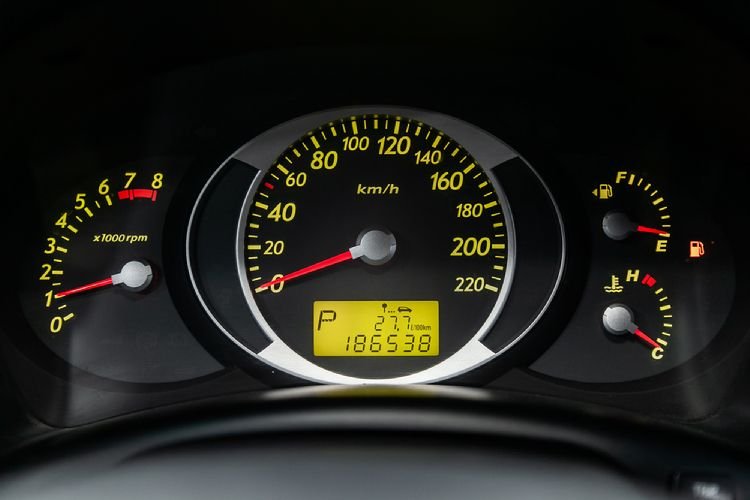Why Are There Overage Charges For Mileage?
Leasing contracts come with mileage restrictions. This is mainly because leasing companies want to control the amount of depreciation, or loss of value, that their leased vehicles experience during a lease term. Typically, leased cars have mileage limits from around 10,000 to 12,000 a year, depending on the manufacturer. Some only offer driving limits as low as 7,500 miles, though.
If you go over miles, it could cost you a pretty penny. Many leasing companies charge around $0.15 to $0.30 per extra mile. That doesn’t sound like very much, but it can add up fast. Going over your limit by just 1,000 miles could potentially cost you around $150 to $300 when you return the vehicle to the dealership.
Most leasing companies have mileage limits that run between 7,500 miles per year to around 12,000 miles per year. This depends on the leasing company and vehicle manufacturer. Some automakers only have a small 5k allowance on vehicles, like the new Dodge Hornet EV, but the vast majority of leases in the US carry a 10,000 mile-a-year limit.
Here are some options to think about before you go over your allotted miles, and some to consider if you already have:
1. Buy Extra Miles at the Start
Leasing companies often allow lessees to buy some extra miles, but typically only at the start of the lease. However, you can typically purchase more miles for a lower cost then you'd pay if you went over by the same amount.
If you’re a lessee who knows you’re going to exceed the typical mileage limit, then it’s a good idea to buy extra miles while finishing up the contract. Hindsight is 20/20, though, so if you're unsure how many miles you need maybe think twice since extra mileage purchases are nonrefundable.
This means that you don’t get any money back for the extra miles you buy if you don't use them. If you don’t go over, the only thing that happens is you don’t pay over mileage fees. Leasing companies don’t reimburse for staying under the limit. If you plan on leasing again, calculate how much you drive so you don’t overbuy miles or underestimate how much you do drive – either miscalculation can cost you.
2. Keep Mileage off Your Ride

If you’re already over your mileage limits and your lease isn’t over, then consider paying for another form of transportation or using a family member’s car to mitigate mileage on your lease. With many people now working from home, it may be an option worth considering if you can, just to decrease the miles put on by a commute.
Many people use taxis and/or ride-sharing services to get around as well. If the cost of getting a ride from someone else or using a ride-sharing service is less than your projected over-mileage fees, then it could be a good option to consider.
3. Buy the Car
If you buy the leased vehicle at the end of the lease, you don’t have to pay for those extra miles. Remember that leasing companies put mileage limits so they can control the depreciation, usually with the intention of selling the previously leased car as a certified pre-owned (CPO) vehicle. But if you buy it, you can say bye-bye to those over-mileage fees. It’s a good option to consider if you’re excessively over the limit. Your leasing contract should include the leased car’s buyout price.
Now may be an especially good time to buy out your lease. With vehicle prices on the rise due to inventory shortages, you could be getting a pretty good deal compared to the higher prices being asked for the same vehicle today. This is because your buyout price is set at the beginning of your lease. In some cases, you might find that your buyout price is far lower than the current residual value on your lease.
4. Start Saving for the Fees Now
If you’re already over miles and you don’t want to purchase the vehicle, then it’s a good idea to start saving for the extra fees now so you aren’t scrambling to repay the fees at the end of the lease. Review your leasing contract to see what your lease charges for over-mileage fees are so you can plan accordingly.
Leasing vs. Financing
If you’re a frequent driver and tack on the miles, then financing a vehicle may be your solution. Many borrowers choose to lease over financing because monthly lease payments on a new car tend to be less expensive than financing a brand-new vehicle. But if you’re always having to buy extra miles because you drive a lot, you might not be saving much money overall.
Auto financing can also be an easier route for bad credit borrowers, as well. Many leasing companies require borrowers to have a good credit score to qualify, typically requiring a credit score above 670 or possibly in the 700s. If your credit score isn’t great, you may have a better chance of qualifying for an auto loan over a lease.
















